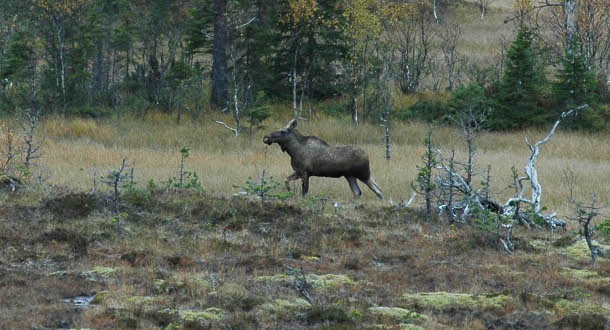Norway Chronic Wasting Disease CWD TSE Prion Skrantesjuke 2 Positive Moose for 2019
CIDRAP CWD Resource Center: http://www.cidrap.umn.edu/cwd
Subscribe to our monthly newsletter: http://www.cidrap.umn.edu/newsletter
Follow us on Twitter: https://twitter.com/CIDRAP_CWD
Norway CWD Moose Dr. Debbie McKenzie
cwd strains
cwd in Moose in Norway are very different than moose here (USA).
when we look at the brains of cwd moose in Norway, it has a completely different distribution than what's been seen in North America.
the numbers in North America are very low, So we really don't have any idea if there could be similarities.
Ah...we have passaged one of the moose samples in our transgenic mice, and...from Norway, and it goes down faster than anything else we've seen. so it suggest that its different than anything else in North America.
it's suggesting it's coming from a different source, so it's not like North america CWD got to Norway, and we just don't know enough about that moose.
snip...end...see video;
https://www.youtube.com/watch?v=xzYcnmc3Xh0&feature=youtu.be&fbclid=IwAR1zPTQ-jHQumn_gudIg3xHGVkBDh_Q330nPq023jgYTgPZ2a2QH5PcvtIE
Greetings again Professor McKenzie,
snip...
the reason i write Ma'am, a bit of confusion, on your presentation, around the 46:30 to 47:40 of your presentation, i have some folks from Norway asking;
''Listen to Debbie McKenzie talking about this CWD strain om moose from 46:30 to 47:40. I don't understand what she mean''
so i went back and listened again, and this is what i transcribed;
i think what they are confused about is this line;
''Ah...we have passaged one of the moose samples in our transgenic mice, and...from Norway, and it goes down faster than anything else we've seen.''
what does this mean please, a bit more detail???
comment from Debbie McKenzie today about this, and many thanks for her comment and work on the tse prion;
''What I meant by that comment was that when we passaged the moose sample from Norway in our transgenic mouse models, the mice presented with clinical disease faster than any of the other CWD agents we have passaged in those mice. I would need to check with lab people as to the particular mouse line. We have passaged dozens of CWD agents in our mouse lines and were somewhat surprised how quickly they presented with disease when infected with Norwegian moose. This further confirms that the moose CWD in Norway is different from deer CWD in North America. We haven't passaged other moose samples (i.e., North American ones) so can't say, based on our data, that Norwegian moose is different than NA moose---but I think Sylvie and Terry Spraker have nicely demonstrated this already''...end...tss
NYTT TILFELLE AV SKRANTESJUKE PÅ ELG
16.11.2019

0 Comments:
Post a Comment
Subscribe to Post Comments [Atom]
<< Home